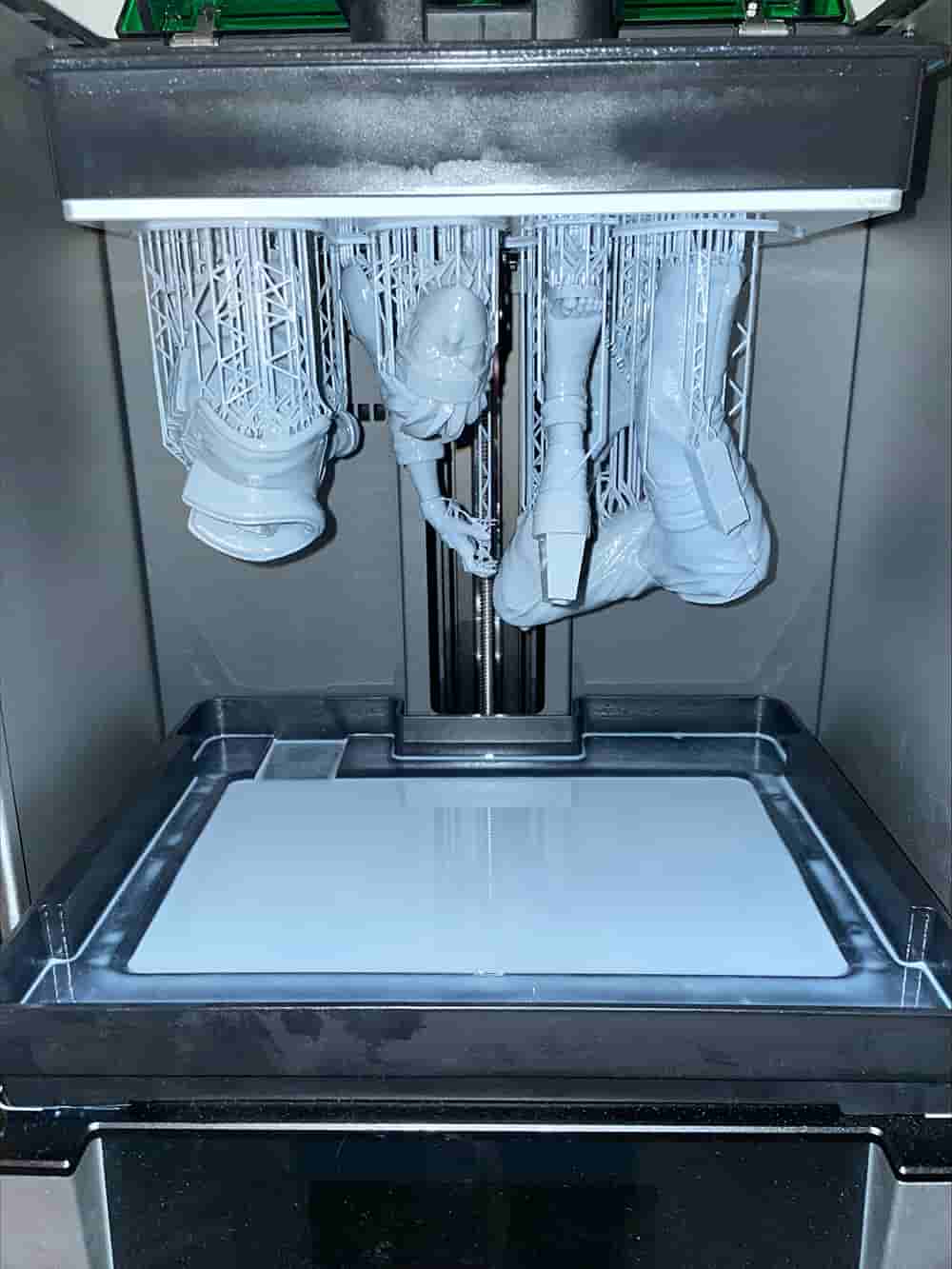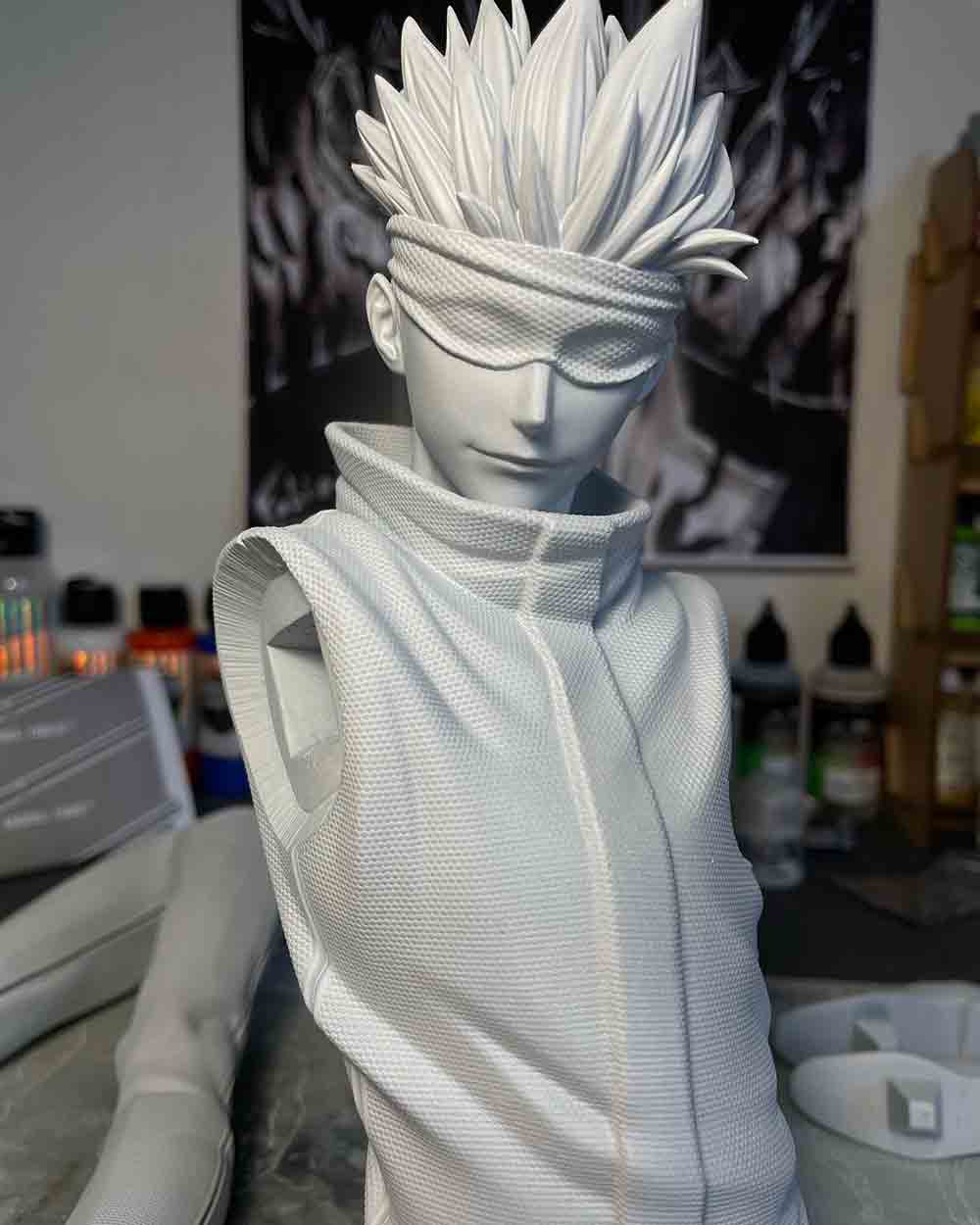Which 3D printer should you choose to make figurines?

If you are new to the subject and you don't yet have a 3D printer, or even 3D printing paint, then this article will help you compare FDM VS Resin 3D printing and what to choose?
If you have to choose, it is quite simple to make your choice, start by asking yourself: “What do I want to do with it?” »
Your answer will more or less easily determine your choice if you refer to my selection guide below which includes the applications presented in the previous parts (link above).
♣ Concerning paints, the choice is free, there is no obligation and I will give you my advice and recommendations for each type of printing below.
Make collectible figurines scale 1/8 to 1/4
If your goal is to do like me, that is to say mainly collectible/exhibition figurines in reduced scales, then it will clearly be better to opt for a resin printer! For its precision and high resolution printing quality of up to 12k, resin printing will perfectly bring out all the textures and the smallest hairs of your character.
You can also make figurines using FDM printing but even with the best possible post-processing, it is very difficult, if not impossible, to achieve a quality similar to 3D resin printing. In short, if you want to make a collectible figurine, there is no need to think, a resin printer will be the best choice!
♣ I recommend HIKARI acrylic airbrush paints from the model radio range. For what ? Because they can be used with both a paint gun and an airbrush. And in their field, these are the most advanced water-based paints, in terms of adhesion and in terms of resistance. They are also water-based paints, with special high-quality finishes, which can be varnished either “water-based” or with solvent-based polyurethane bodywork varnishes.
FDM VS Resin, which paint to choose for your 1/1 scale 3D figurines?
Here, we are no longer talking about figurines that you are going to put in your library but about real-size figurines! If this is what you want to do, in this case, an FDM printer will be better suited!
Still, it's still a figurine, right? So, why not go with a resin??? Well, the answer is quite simply that for very large parts, FDM printers are (for the moment) more suitable. They offer print volumes which are much larger than resin printers and in FDM, it is easier to smooth a large part with a large flat surface to sand well, than a small part with lots of relief!
It is also possible to make 1/1 size figurines in resin, especially as larger and larger printers are emerging, but the price of these printers is much higher and this will require cutting your model into more pieces only if you do it in FDM. In summary, to make 1/1 size figurines, an FDM (large format) printer will be more suitable but the ideal would be to also have a resin printer to make certain parts, even if it is not obligatory.
♣ Most well-known or specialized painters I know prefer solvent-based paints. Whatever their format, in a small 125 ml bottle like those in the GRAPHIC and SPARKLE range, these are indeed professional paints, the same ones found in 1 liter pots, for painting vehicles. These are high quality paints, really very easy and pleasant to paint. They are extremely fine, can be applied with an airbrush, and are ideal for creating metallic or pearlescent effects.
However, be aware that today vehicle painters paint with water-based paints! And these are the same paints that are offered in the HIKARI RC range with exactly the same metallic or pearlescent colors, and even Chameleon. From now on, there are only solvent-based finishing varnishes, which remain unrivaled and impossible to obtain with “hydro” products.
Make miniature figures

For this application, I think you guessed it, you clearly need a resin printer! Miniature figurines have a lot of detail, that's what makes them beautiful, if you want all the details to appear perfectly, this is the resin you need!
Especially since they are small figurines, you can make lots of them at once! And in resin printing, making a tray with a single figurine or a tray with the same figurine in 5 batches will require exactly the same printing time! Whereas in FDM, it will be 5 times longer! Easy to build your army, right?!?
♣ Very clearly, you must use acrylic airbrush paints. I recommend the STARDUST Pro range, because they are ultra-fine acrylic colors, specially dedicated to the finest airbrush nozzles. These paints are ready to use and therefore never need to be diluted. They have high covering power and their formula has the advantage of being compatible with almost any support, including PLA and resins. And above all, the Stardust Pro range offers a huge choice of colors and effects of all kinds for painting miniatures.
Doing Cosplay
Who says “Cosplay”, says human-sized pieces and who says human-sized pieces says…FDM printer!! And yes, for exactly the same reasons as for 1/1 size figurines, it is preferable to use FDM printing to make your Cosplay! Especially since PLA is less fragile than resin, it is therefore a smarter choice for cosplay.
There are of course resins that are very resistant to shocks but their cost is much higher and a cosplay made entirely of resin would be very heavy if we want it to be resistant!
The ideal would also be to have a small resin printer to make more technical parts like helmet lenses, transparent orbs, etc. But if you want to cosplay, you need a large format resin printer!
♣ For pieces 1 to 2m long, it is clear that the use of a paint gun is mandatory. If you are lucky enough to have a workshop with good air circulation, you can use any solvent-based paint, usually used on motorcycles or vehicles. This means that all the paint ranges on our site are suitable for COSPLAY type prints. I invite you to take the time to discover our categories of metallic paints and Chameleon for example.
Make decorations/toys to discover 3D printing and have fun
If you simply want a 3D printer to discover and have fun without taking too much trouble by printing simple things like Pokemon, phone holders, pencil holders... and you also don't want to paint your prints, then I clearly recommends an FDM printer to you.
FDM printing is much less restrictive than a resin printer and in my opinion it is much easier to start with FDM than with resin. If you don't want to worry too much and print cool objects from time to time, an FDM printer will be the best choice!
♣ Concerning the choice of paints, to start and discover painting techniques on all supports, I clearly recommend WPU paints from the Stardust Pro range, because they offer the largest choice of satin colors and auxiliary products. I find that within this range, there really is everything to create any finish imaginable. Best of all, these paints are extremely easy to use and clean. They form a very thin film of dry paint, which dries quickly and which, in my opinion, is very resistant, even without varnish.
Make spare/mechanical parts
Finally, the last point that I wanted to mention is if you want a printer to make spare parts or “mechanical” parts which will be subject to more or less significant traction, compression, and twisting forces. In this case, it's a bit case by case, FDM and resin printers can both do the trick provided you use the appropriate filament or resin!
There are resins that are very resistant to shock and heat, or even flexible resins, just as there is a variety of more technical filaments with characteristics adapted depending on the use!
And that’s it, my recommendations on choosing the type of printer stop there! Of course, there are many applications that I have not mentioned but I am sure that the application you will make is in one of its 6 points!
♣ For professional uses and in particular for parts subject to significant abrasion conditions, I advise you to use primers. I am thinking in particular of plastic primers (consult our category on special primers), which cannot be done without adequate prior preparation.
Then, you should not look for resistant paint, because there are no beautiful pearl or metallic paints that are resistant. It is the varnish that creates resistance and protection. There are many technical clearcoat, both for the food sector and for industry. For example, there is a ceramic varnish that is much harder than any varnish on the market.
Painting on a resin 3D print
Which paint for 3D printing?
How to paint a 3D print?
Choosing acrylic paints for 3D printing
FDM (Fused Deposition Modeling) printing



















































































